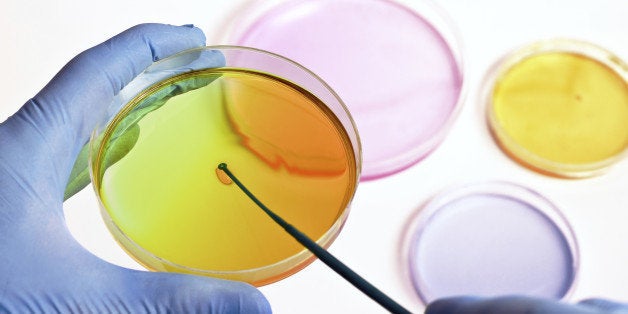
Scientists around the world, along with numerous organizations, including the U.S Centers for Disease Control and Prevention (CDC) and the World Health Organization, have said that if we do not significantly reduce antibiotic use in humans and animals, these wonder drugs will soon lose their effectiveness. Action is needed from all stakeholders -- government leaders, the scientific community, the pharmaceutical industry, the agricultural industry and the general public -- to address this global threat.
As I noted in an earlier blog, superbugs do not stay in silos -- they spread between livestock and people, between hospitals and the community, and from nation to nation -- but the stakeholders concerned about antibiotic resistance are not leaving their silos, and this prevents progress at a time when it's most needed. As part of my effort to increase communication between scientists and policymakers, I organized a letter of over 50 leading researchers from across the globe that urged the U.S. Food and Drug Administration (FDA) to quickly finalize a proposed rule to collect, analyze and publish more detailed data on antibiotic use in U.S. food-animal production.
The proposed rule, "Antimicrobial Animal Drug Sales and Distribution Reporting" (Docket No. FDA-2012-N-0447), is an important step in addressing antimicrobial resistance by collecting and reporting on how and why antibiotics are used in food animals. This detailed data would help us better understand where misuse and overuse of antibiotics occurs and its related impact on human health. It would also help measure the effectiveness of U.S. federal policies aiming to reduce inappropriate antibiotic use in food-animal production.
I have dedicated my career to understanding antibiotic resistance and how to slow it. Central to this goal is ending the misuse of antibiotics in food-animal production, where these drugs are too often overused, creating a breeding ground for antibiotic-resistant bacteria. Research tells us that bacteria move about freely in the environment and some flow seamlessly between people and animals. Studies from around the world and dating back to the 1960s have drawn links between agricultural use of antibiotics, the development and spread of drug resistance, and resulting human infections. This research has shown repeatedly how antibiotic use in food-animal production breeds antibiotic-resistant bacteria that end up in our bodies, food, air and water.
According to the most recent data in the United States, in 2013, 32.6 million pounds of antibiotics were sold for use in food animals. Most of these life-saving drugs were used to promote growth or to keep animals from getting sick because of unhealthy living conditions. Beyond this total number, we know little else. Neither drug companies nor food-animal producers have been required to report how or why these drugs are used. Currently, we cannot determine antibiotic use by animal species, production stages, indications, or even how often they are used without veterinary oversight.
That is why more than 50 renowned scientists signed on to the FDA letter calling for action: we simply must have more data on antibiotic use in food-animal production in order to preserve our life-saving antibiotics and slow this growing public health crisis.
***
Lance B. Price, Ph.D., is a microbiologist and the director of the Antibiotic Resistance Action Center at Milken Institute School of Public Health at the George Washington University in Washington, DC.
